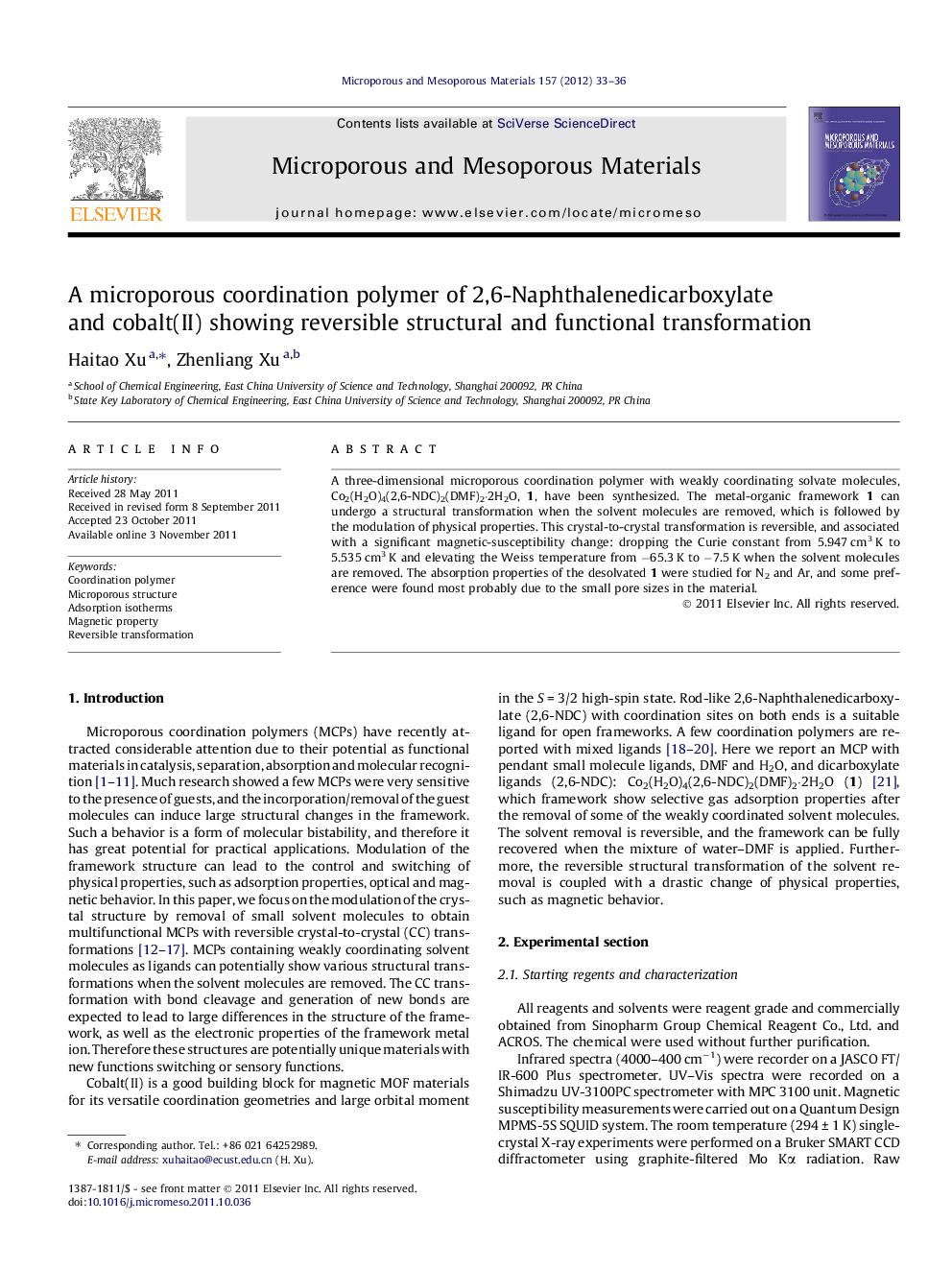| Article ID | Journal | Published Year | Pages | File Type |
|---|---|---|---|---|
| 73949 | Microporous and Mesoporous Materials | 2012 | 4 Pages |
A three-dimensional microporous coordination polymer with weakly coordinating solvate molecules, Co2(H2O)4(2,6-NDC)2(DMF)2·2H2O, 1, have been synthesized. The metal-organic framework 1 can undergo a structural transformation when the solvent molecules are removed, which is followed by the modulation of physical properties. This crystal-to-crystal transformation is reversible, and associated with a significant magnetic-susceptibility change: dropping the Curie constant from 5.947 cm3 K to 5.535 cm3 K and elevating the Weiss temperature from −65.3 K to −7.5 K when the solvent molecules are removed. The absorption properties of the desolvated 1 were studied for N2 and Ar, and some preference were found most probably due to the small pore sizes in the material.
Graphical abstractFigure optionsDownload full-size imageDownload as PowerPoint slideHighlights► Synthesis and structure of a microporous complex Co2(H2O)4(2,6-NDC)2(DMF)2·2H2O. ► Selective absorption properties of microporous structure. ► Crystal-to-crystal reversible structural and functional transformation.
